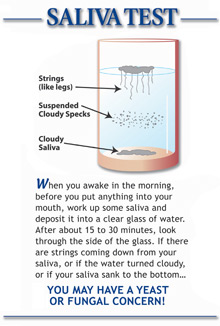What is Candida and do I suffer from it?
How do you get candida overgrowth?
The healthy bacteria in your gut typically keep your candida levels in check. However, several factors can cause the candida population to get out of hand:
- Eating a diet high in refined carbohydrates and sugar (which feed the yeast)
- Consuming a lot of alcohol
- Taking oral contraceptives
- Eating a diet high in beneficial fermented foods like Kombucha, sauerkraut and pickles
- Living a high-stress lifestyle
- Taking a round of antibiotics that killed too many of those friendly bacteria
Here are 10 common candida symptoms
- Skin and nail fungal infections (such as athlete’s foot or toenail fungus)
- Feeling tired and worn down or suffering from chronic fatigue or fibromyalgia
- Digestive issues such as bloating, constipation, or diarrhea
- Autoimmune disease such as Hashimoto’s thyroiditis, Rheumatoid arthritis, Ulcerative colitis, Lupus, Psoriasis, Scleroderma or Multiple sclerosis
- Difficulty concentrating, poor memory, lack of focus, ADD, ADHD and brain fog
- Skin issues such as eczema, psoriasis, hives, and rashes
- Irritability, mood swings, anxiety, or depression
- Vaginal infections , urinary tract infections, rectal itching or vaginal itching
- Severe seasonal allergies or itchy ears
- Strong sugar and refined carbohydrate cravings
Blood test: You'll want to check your levels for IgG, IgA, and IgM candida anti-bodies. These can be checked through most any lab. High levels indicate an overgrowth of candida.
Stool testing: The most accurate test available. This will check for candida in your colon or lower intestines. The lab can usually determine the species of yeast as well as which treatment will be affective. (Note: be sure that your doctor orders a comprehensive stool test rather than the standard stool test.)
Urine Organix Dysbiosis Test: This test detects a waste product of Candida yeast overgrowth known as D-Arabinitol. An elevated test means an overgrowth of candida. This test will determine if there is candida in your upper gut or small intestines.
Some of the symptoms listed may sound “normal,” because the Candida problem is so common in the modern world. Some are led to say, when they review this list, “Doesn’t that describe everybody?” It must be emphasized that none of these symptoms are part of normal health. When too many people around us are ill, strange symptoms may become common, but that does not make themnormal. Many of the things listed — such as asthma, diabetes, epidemic obesity, chronic fatigue, fibromyalgia, ADD/ADHD, autism, panic attacks and others — were virtually non-existent (or at least much less common) before the 1970s. They became much too common as a consequence of various factors, including: widespread overuse of antibiotics starting in the 1950s; increased availability of chlorinated swimming pools; much increased use of pesticides, hormones and antibiotics in the food supply; the advent of the birth control pill; and the addition since the 1990s of barley malt into nearly every baked food (cereals, crackers, cookies) and of high-fructose corn syrup as a sweetener in beverages.
A person with Candida overgrowth may have only 2-3 of these symptoms, or may identify with many.
Mental/emotional/nervous system:
- Headaches and migraine headaches
- Depression
- Sleep problems — difficulty falling asleep, or waking up in the middle of the night with a mind that won’t calm down (typically between 1 and 3 am)
- Irritability and confusion
- Poor memory
- Anxiety attacks, panic attacks
- Obsessive-compulsive disorder (OCD)
- Heart beating too fast or irregularly
- Sexual problems — impotence or lack of desire, or excessive sexuality
- Attention deficit, hyperactivity (ADD/ADHD)
- Dizziness
- Numbness
- Feeling of floating or not quite being in your body
- Indecisiveness, difficulty organizing and cleaning messy areas
Digestive system:
- Cravings for sugar, chocolate, milk, cheese, vinegar, pickles, alcohol, bread, nuts or fruit
- “Metabolic syndrome” which includes the following: large abdomen (“beer belly”), adult-onset diabetes, high cholesterol or triglycerides, high blood pressure
- “Beer belly,” also called truncal obesity — excess weight centered around the abdomen
- Acid reflux/GERD (heartburn)
- Hypoglycemia (low blood sugar)
- Bloating, flatulence or abdominal pain
- Rectal itching
- Constipation and/or diarrhea
- Excessively thin or anorexic/bulimic
Skin, eyes, hair:
- Skin and nail fungal infections (current or past), including: athlete's foot, vaginal yeast infections, fungal toenails, ringworm, jock itch, tinea versicolor or itchy eyelids
- Skin problems like eczema, rashes, psoriasis
- Prematurely graying hair
- Pupils always dilated
- Unusually green eyes, or eye color has turned greenish
Immune disorders:
- Asthma and allergies
- Recurring infections — colds, ears, bladder, sinus
- Autoimmune disease (lupus, hypothyroidism, arthritis, others)
- Penicillin allergy
Whole body:
- Fatigue
- Muscle or joint pain, fibromyalgia
- Cold feet, cold hands, sometimes cold nose
- Sweating, especially at night
- Uncomfortable at any temperature
Women’s health issues:
- Premenstrual syndrome (PMS)
- Endometriosis (chronic pelvic pain)
- Infertility (female), some miscarriages, toxemia of pregnancy (preeclampsia)
Symptoms seen particularly in children up to about 8 years old:
- Early allergy to foods like milk
- Infections as a baby
- Child had or has frequent ear infections, tonsillitis, strep throat or bladder infections, especially if these infections were treated with antibiotics
- Cravings for milk, cheese, yogurt, macaroni and cheese, or peanut butter
- Asthma
- “Drama king” or “drama queen” — complains quite vocally and often
- Poor sleep patterns — difficulty going to sleep, sleeps too lightly or has frequent nightmares, and wakes up too early (or sometimes too late)
- Too thin or overweight
- Attention deficit with or without hyperactivity (ADD/ADHD)
- Aggressive, poor social interactions, can’t stop moving, frequent fights or arguments, frequent crying
- Autism
- Pale complexion, dark circles under the eyes
Two points should be understood with regard to the above list of signs and symptoms of Candida overgrowth. First, while all of the symptoms listed are definitely seen in Candida patients and evidence indicates Candida causes or strongly contributes to the development of these problems, there are other contributing factors that can also bring about some of these problems (such as mercury or other metal toxicity, consistent excess electromagnetic field exposure, underlying viral infections, petrochemical exposure, etc.). Second, treatment for Candida alone will usually bring about significant improvement in these symptoms, but will not be adequate in all cases to restore health. Often additional treatments aimed at improving liver, adrenal or thyroid function, or correcting immune and allergic problems, are necessary to regain health.
Effectively treating candida involves stopping the yeast overgrowth, restoring the friendly bacteria that usually keep them in check, and healing your gut so that candida can no longer enter your bloodstream.
Getting rid of the candida overgrowth primarily requires a change in diet to a low carbohydrate diet. Sugar is what feeds yeast, so eliminating sugar in all of its simple forms like candy, desserts, alcohol and flours.
And reducing to only one cup a day of the more complex carbohydrates such as grains, beans, fruit, bread, pasta, and potatoes will prevent the Candida from growing and eventually cause it to die. I would recommend eliminating all fermented foods as well.
It's a must to restore the healthy bacteria that typically keep your candida population under control, you should take probiotics on a regular basis. Taking anywhere from 25 to 100 billion units of probiotics should help to reduce the Candida levels and restore your levels of good bacteria. Finally, healing your gut by eliminating inflammatory foods that can harm your GI tract and introducing foods that aid in digestion and nutrient absorption, will prevent candida from working its way through your body, and will dramatically improve your overall health.
If you would like to find out for sure if you have candida overgrowth, consider seeing a functional medicine doctor who is trained in detecting and treating candida.






